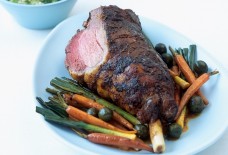Blind Arab American advocate champions braille menus in restaurants
By Micah Walker
Press and Guide
For the majority of people, dining out is a fun, relaxing experience they often take for granted. However, for people like Khodr Farhat, going out to eat can be challenging.
The visually impaired 23-year-old said he usually dines out at least once a week, always relying on family and friends or the wait staff to read the menu to him.
With a new idea in mind, Farhat plans to change the restaurant experience for blind people and make it more enjoyable.
In the near future, the self-advocate wishes to partner with restaurants in Dearborn and Dearborn Heights to create braille menus for visually impaired customers. The menus will be available in two languages, English and Arabic.
Among the businesses Farhat wants to work with are Habib’s Cuisine, LA Bistro, Subway and Al-Ameer. The Dearborn resident also is interested in designing menus for coffeehouses and lounges.
“Why not have a braille menu that will be accessible for someone who cannot see?” Farhat said. “Instead of taking too much time from the waitress or waiter to read me the menu, I would prefer to take my own time to read over the whole menu just like everybody else.”
According to the American Foundation for the Blind, braille is a series of raised dots that can form various letters, punctuation marks and numbers. The symbols used in the code system are created using braille cells. Six dots consist of a braille cell, with three dots aligned in two rows. More than 64 combinations can be used within a cell.
Farhat was first taught how to read braille at 3 years old by teachers from Al-Mabarrat, a school in Lebanon for disabled children.
Since moving to the United States with his family at the age of 16, his level of success has gotten higher. Farhat has become a community leader, actively participating with several organizations such as Foundation Fighting Blindness, Dearborn Goodfellows, the Lebanese American Heritage Club of Dearborn and the American Cancer Society.
In January, he added politics to his list of dreams when he announced that he was running for a position on the Dearborn Board of Education.
During the past eight months, Farhat has been busy managing his campaign, along with graduating from Henry Ford College in May and accepting a position with the state of Michigan in helping visually impaired people.
To make the menus, Farhat will either use a manual braille writer or an embosser. According to the AFB, the machine has six keys, along with a line spacer, backspace and a space bar. Multiple keys can be used at the same time due to the majority of words needing more than one dot. An embosser is more like a printer, as a document can be typed in text, converted into braille software, and then printed out. Farhat will design the menus free of charge.
“This step is not only designing a braille menu, but it is part of shaping an inclusive society that resembles tolerance,” he said.
If the menus gain enough interest in Dearborn and Dearborn Heights, Farhat’s next move is to design them for establishments in Detroit and other cities in the metropolitan area.
He is excited to begin his latest venture, knowing it will bring relief to visually impaired patrons, as well as make them feel included in everyday activities such as dining.
“I would love to see everyone happy, satisfied and their needs met,” he said.
Source: www.pressandguide.com


